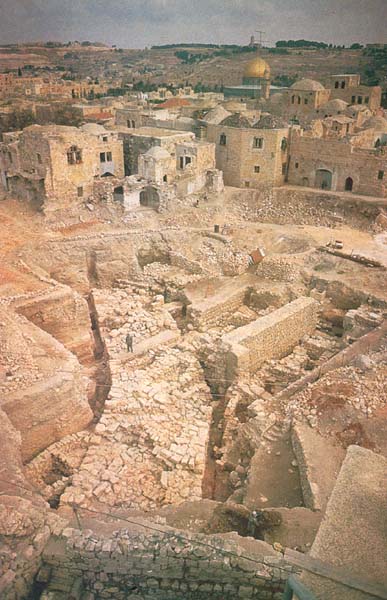Image Details

Nahman Avigad
Before unearthing a 130-foot section of the wall, Avigad had already discovered remains of houses in the same area containing pottery and other artifacts datable to the eighth and seventh centuries B.C.E. The wall itself stood partly on bedrock and partly on recently built houses. Avigad reasoned that only a king could have ordered the building of so major a structure, and the fact that new housing had to be destroyed in the process indicates that the wall was erected during a crisis. Two passages in the Bible helped Avigad pinpoint the date and purpose of the wall: King Hezekiah, in 701 B.C.E., “saw that [the Assyrian ruler] Sennacherib had come, intent on making war against Jerusalem.… He [Hezekiah] acted with vigor, rebuilding the whole breached wall, raising towers on it and building another wall outside it” recounts 2 Chronicles 32:2–5 and Isaiah 22:10 states that Hezekiah “pulled houses down to fortify the wall.” Hezekiah, thanks in part to this wall, successfully repulsed Sennacherib’s attack.
From the angle in the wall and from data revealed by other excavations, Avigad argued that the wall enclosed more of the western hill of Jerusalem than previously believed; archaeologist Magen Broshi estimated that 25,000 people had lived within the wall’s boundaries in the eighth century B.C.E.
